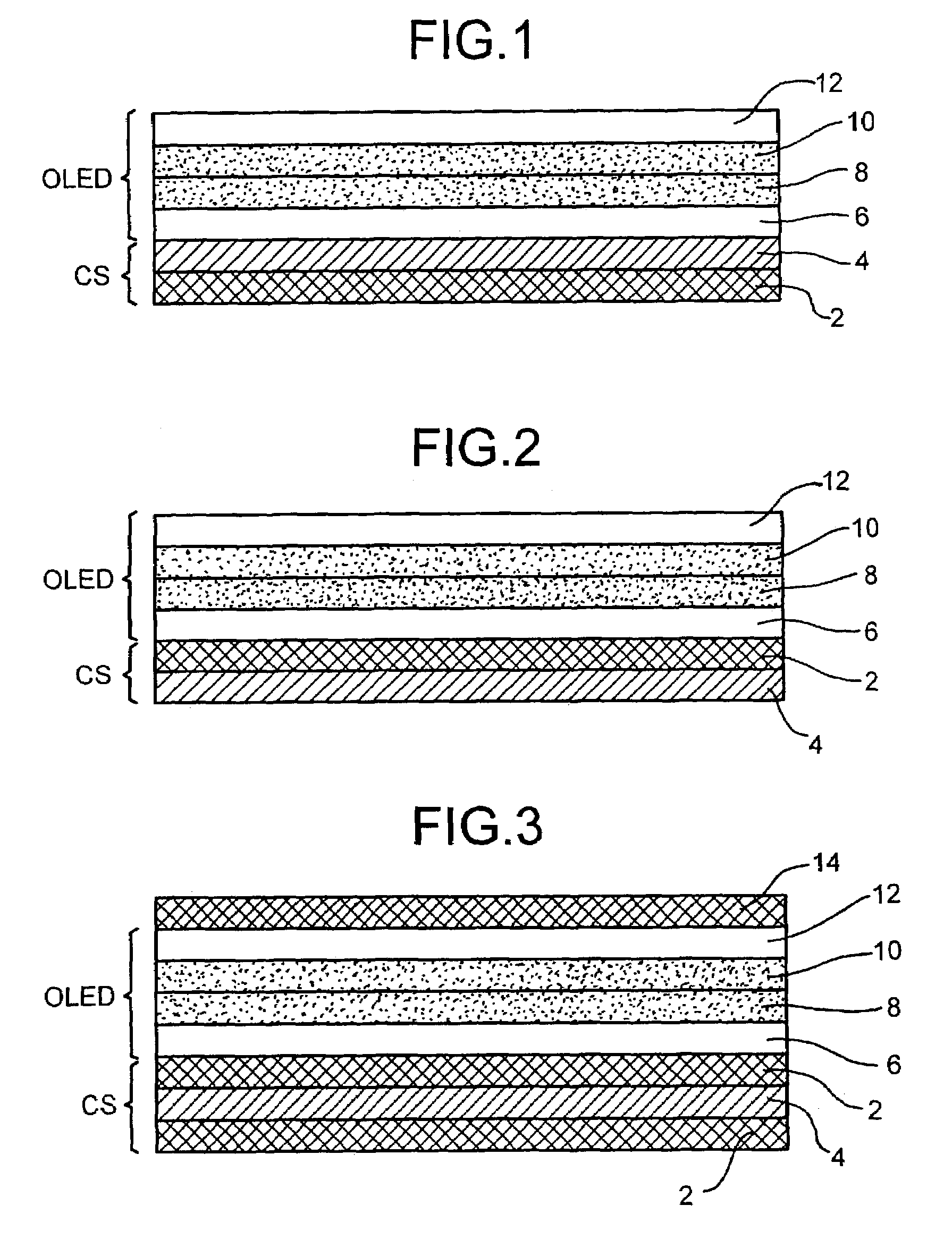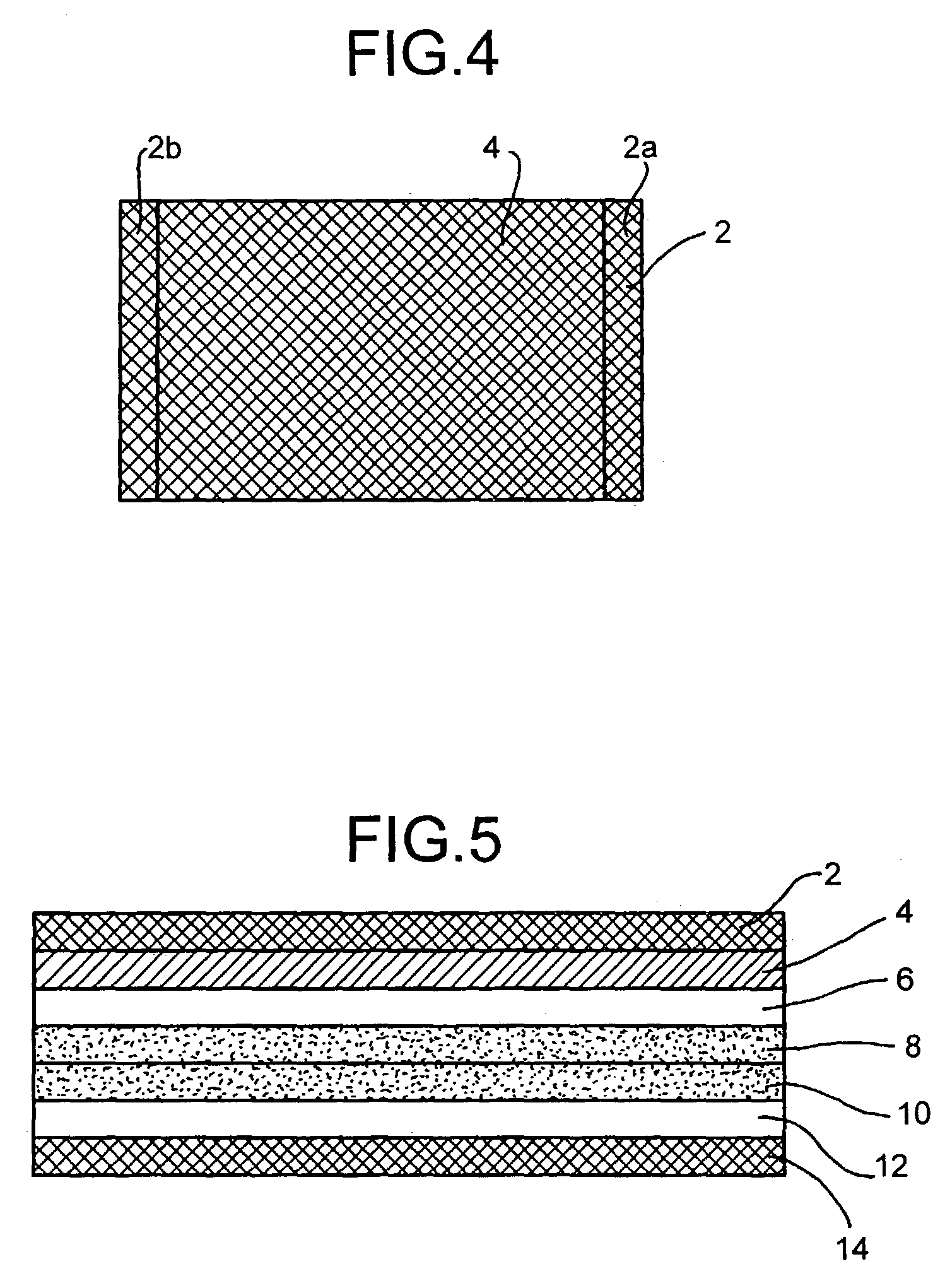Flexible substrates for organic devices
a flexible substrate and organic technology, applied in the field of flexible substrates for organic devices, can solve the problems of insufficient barrier for long-life organic devices, the oxygen and water permeability of even the most impermeable transparent plastic substrates (thin films) presently available is too high to be sufficient as a barrier, and the deposited thin ito (or other conductive oxide coating) is prone to “cracking”
- Summary
- Abstract
- Description
- Claims
- Application Information
AI Technical Summary
Benefits of technology
Problems solved by technology
Method used
Image
Examples
Embodiment Construction
[0053]FIG. 1 illustrates an organic light-emitting device with a composite structure as its substrate. In FIG. 1, OLED is used to denote the organic light-emitting device and CS is used to denote the composite structure. The composite structure comprises a plastic layer 2 and a glass layer 4. The organic light-emitting device OLED comprises a first electrode layer 6, in this case an anode formed of indium tin oxide, a first thin film of an organic light emissive material 8 (in this case PPV), a second thin film of an organic material 10 (e.g. MEHPPV, and a second electrode layer 12 in this case a cathode, for example of a calcium layer capped by an aluminium layer. The second layer of organic material can be a light-emissive layer or a charge transport layer or have some other purpose. Further organic light-emissive layers can be provided.
[0054]As an alternative to the arrangement described above, layer 8 could be a charge transport layer such as polyethylenedioxythiophene doped wit...
PUM
| Property | Measurement | Unit |
|---|---|---|
| thickness | aaaaa | aaaaa |
| thick | aaaaa | aaaaa |
| thicknesses | aaaaa | aaaaa |
Abstract
Description
Claims
Application Information
 Login to View More
Login to View More - R&D
- Intellectual Property
- Life Sciences
- Materials
- Tech Scout
- Unparalleled Data Quality
- Higher Quality Content
- 60% Fewer Hallucinations
Browse by: Latest US Patents, China's latest patents, Technical Efficacy Thesaurus, Application Domain, Technology Topic, Popular Technical Reports.
© 2025 PatSnap. All rights reserved.Legal|Privacy policy|Modern Slavery Act Transparency Statement|Sitemap|About US| Contact US: help@patsnap.com



